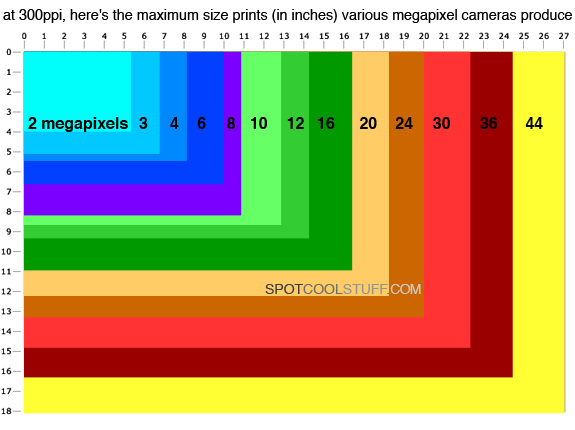
Note: The PCIe-1427 has 16 KB of on-board memory. Can I successfully perform a snap acquisition? My camera has a clock rate of 80 MHz and the board is in a 1x PCIe slot. I am acquiring a 1280x1024 12-bit image at 10 frames per second using a PCIe-1427 frame grabber.
Note: This number should be around 10^6 in magnitude, or Megabytes/second. Bytes/frame x Frame Rate = Bytes/second.Width x Height = Resolution (in pixels).The resolution of the image (also referred to as megapixels)įollow these steps to calculate the bits per second for your acquisition.To calculate the average data rate, you need to know three pieces of information: If a frame is too large to transfer all of the data across the bus in the allotted acquisition time, we will experience an acquisition timeout error.
#Megapixel to resolution calculator software#
The average data rate is the speed at which the software receives an entire frame from the camera, and is determined programmatically by the frame rate.
We can use the FIFO accumulation rate and the frame time to determine the FIFO requirement for one frame.įIFO Requirement = FIFO Accumulation Rate x Frame Time

This number is different from the frame rate and is determined by the camera’s clock rate.įrame Time (s/frame) = Resolution / ( # of Taps x Pixel Clock Rate) We also need to know the amount of time required to acquire one frame from the camera. Use the following equation to calculate the FIFO accumulation rate:įIFO Accumulation Rate (MB/s) = Instantaneous Data Rate - Bus Throughput If the FIFO fills up before a complete frame is acquired, we will experience a buffer overflow, even if we are only acquiring one frame. If the throughput is less than the instantaneous data rate, then we have to consider the rate at with the onboard FIFO will fill. If the throughput from the frame grabber over the bus is larger than the instantaneous data rate, we will not experience any buffer overflows. Once we know the instantaneous data rate, we can then determine if our hardware can handle the acquisition. Instantaneous Data Rate (MB/s) = Pixel Clock Rate (MHz) x Pixel Depth (Bytes) x # of Taps. Use the following equation to calculate the instantaneous data rate: *10 & 12 bit images are represented as 16 bit in memory.


 0 kommentar(er)
0 kommentar(er)
